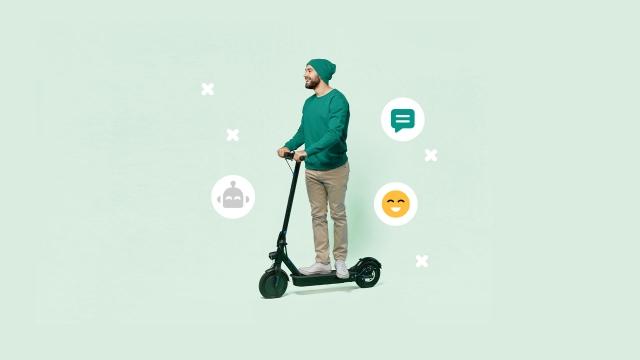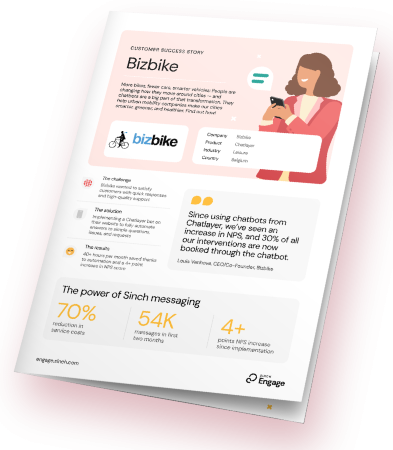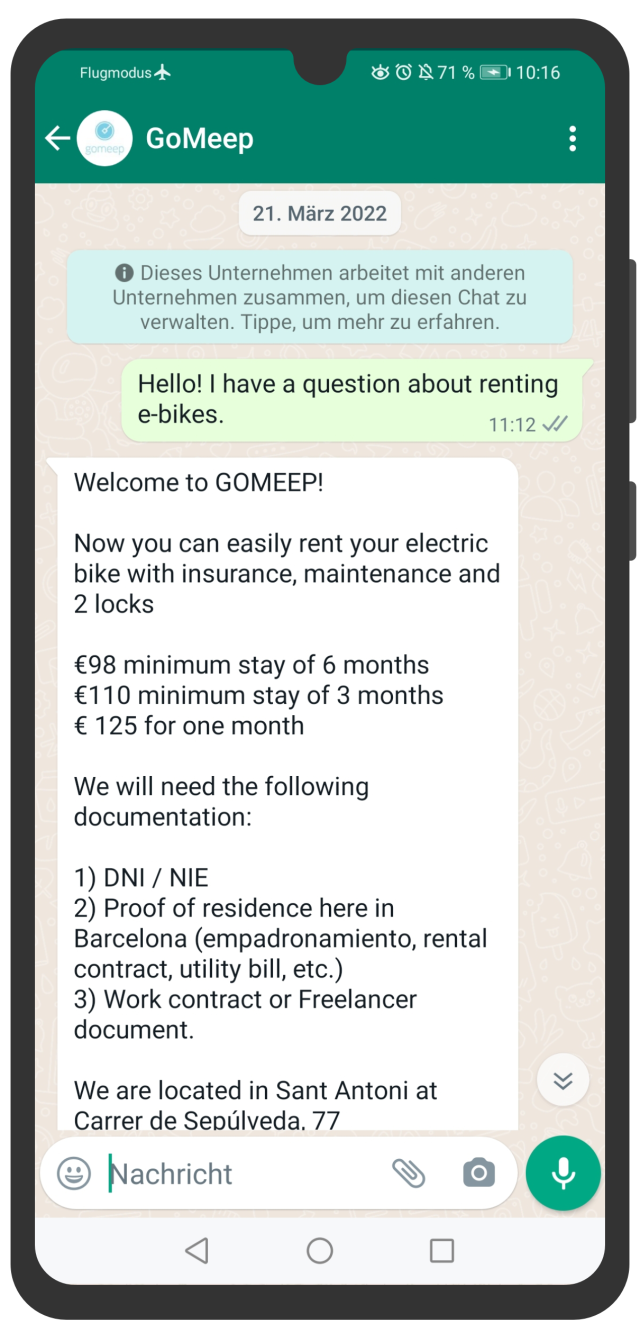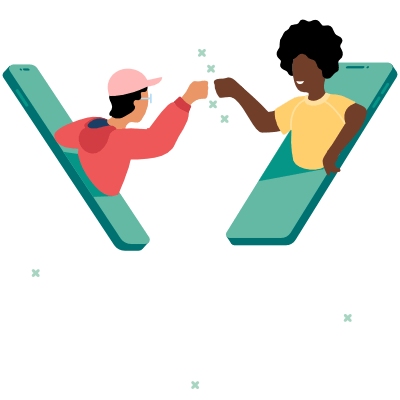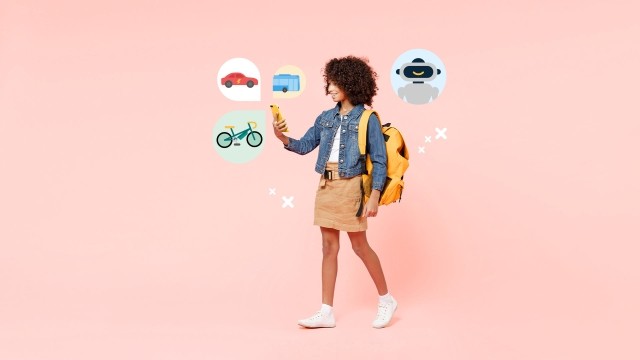More bikes, fewer cars, smarter vehicles: people are changing the ways they are moving around cities — and messaging apps and chatbots are a big part of that transformation. These conversational solutions help urban mobility companies make our cities smarter, greener, and healthier. Find out, how!
Think back about five years ago. Did you imagine that electric vehicles, shared bikes, and smart public transportation would become a common sight in our cities? Probably not! In some places, it’s not even unusual to see self-driving cars or flying taxis anymore.
Interestingly, it’s not mainly federal governments driving this switch, but cities, urbanites, and committed companies. And they're using conversational solutions like messaging apps and chatbots to change urban mobility around the world.
How messaging apps and chatbots are driving the biggest trends in urban mobility
With more than 500 megacities in the world, inhabited by over 20 million people, most large urban centers are facing congestions, shortage of space, parking problems, noise and air pollution, and an overall lower quality of life.
It has become clear that the way we have moved around in cities for the past decades doesn't work anymore. This realization has led to several big changes in urban mobility. These are not only propelled by new ideas, but also by new technologies, such as messaging apps and chatbots. In fact, three of the biggest urban mobility trends right now — e-mobility, shared mobility, and food delivery are driven by these conversational technologies.
Pushing e-mobility
From electric cars to e-bikes to e-scooters: EVs are growing in popularity around the world.
In Europe and North America, especially the e-bike market has really taken off. From 2014 to 2019, the number of sold e-bikes in Europe has tripled. As a fast and fun way of transportation, e-bikes have even started replacing cars in some European countries, like Denmark or the Netherlands.
In North America, e-bikes are also hugely popular. In the US, EV sales from 2020 to 2022 basically tripled, with even more e-bikes being sold than electric cars.
Similarly, in India, EV sales have more than quadrupled from the fiscal year 2021 / 2022 to 2022 / 2023. Here, two-wheelers made up 60% of all EVs sold and three-wheelers accounted for 29% of EV sales.
With this soaring demand in EVs, mobility companies around the world face two challenges: stand out with their offer in a fast-growing, competitive market and manage the high customer demand. Messaging apps and chatbots are helping with both!
Best case: Ola Electric markets electric scooters via WhatsApp
Ola Electric is a subsidiary of Ola Cabs, and one of the best-known EV companies in India. Their focus is on electric two-wheelers.
In order to stand out from their competitors, Ola Electric uses India's most pouplar messaging app, WhatsApp, to promote their vehicles and stand out from their competitors.
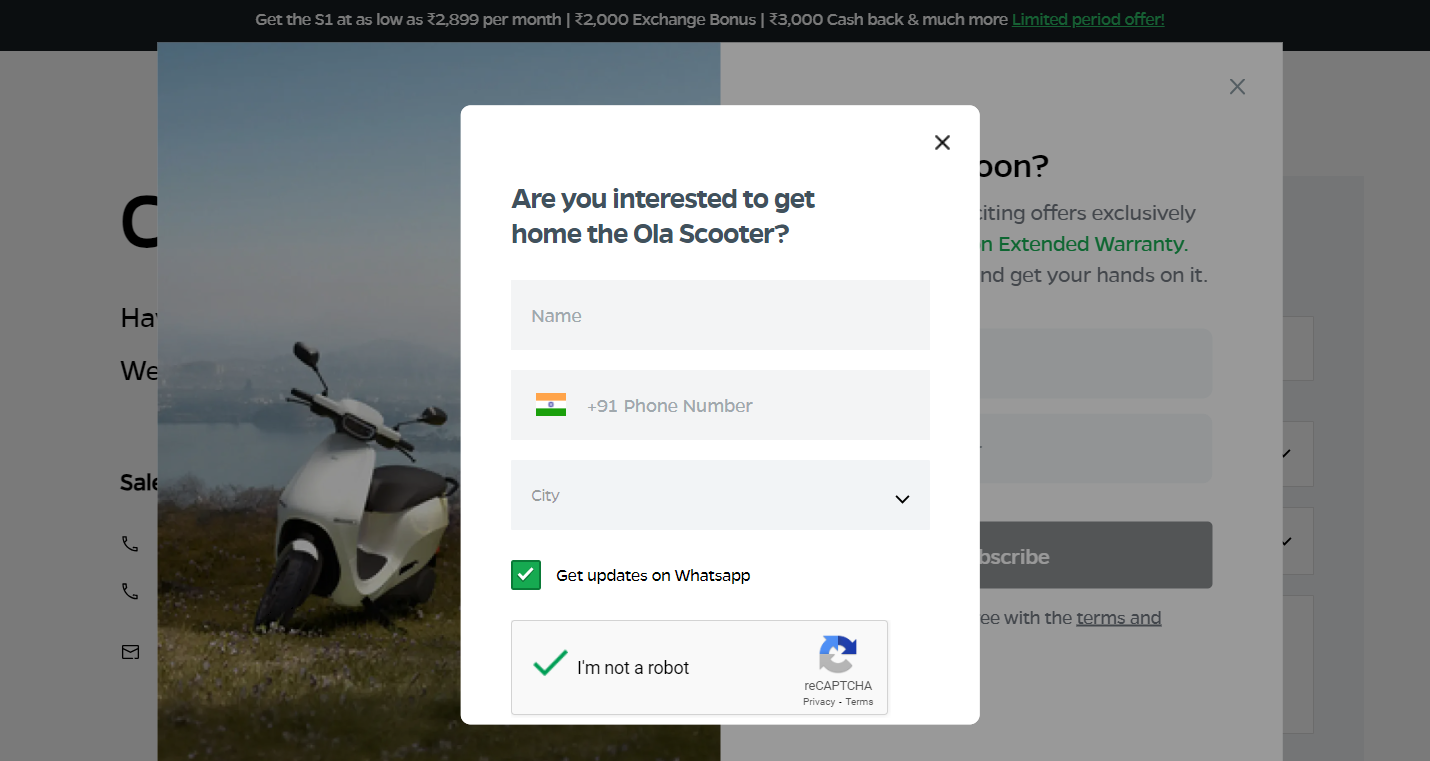
Best case: Bizbike provides faster customer help with a chatbot
On the other hand of the EV market spectrum, Bizbike, Belgium's largest e-bike provider, was looking for ways to improve its customer service and manage the large and growing number of inquiries. Their solution: a chatbot! Together with Sinch Chatlayer, they launched a bot that helps them provide faster answers to their customers and streamline queries for a higher quality service.
With the bot, Bizbike is now managing 30% of all interventions. As a result, the e-bike provider isn't only saving more than 40 hours per month, but they also improved the quality of their service, with 62% of customers now actively promoting Bizbike’s service.
Making shared mobility more convenient
The “sharing is caring” idea has really taken off in the context of shared mobility. Why? Because it makes a lot of sense! Studies show that, on average, car owners, only use their vehicles one hour per day. As this is not efficient, mobility companies and cities have launched shared mobility services, such as shared e-scooters, car sharing or bike sharing.
Shared vehicles offer a greener alternative to privately owned cars, and they can also help reduce congestion in cities. Because shared mobility has so many advantages, city dwellers have really taken to it. Bikesharing or scooter sharing have become a common way to get around.
For shared mobility companies, it's now all about making their service more efficient, more customer friendly, and growing their business.
Best case: GOMEEP saves time and money with a WhatsApp chatbot
GOMEEP offers a variety of services, from renting e-bikes and e-scooters to private riders to providing whole fleets for businesses. As it became increasingly difficult to deal with all incoming queries in a timely manner and still provide top service, GOMEEP implemented a WhatsApp chatbot to automate the process.
According to GOMEEP co-founder and CEO George Parker, the bot helped them keep acquisition costs low, while increasing conversions.
Making food delivery more accessible
Initially forced by the Covid-19 lockdowns, delivering food to customers has now become a popular option with restaurants around the world. And that's simply because even outside of a pandemic, getting food delivered is very convenient.
Foodies love to receive dishes from their favorite restaurants without having to leave the house. And as more people are working from home now, they welcome the effortlessness of getting their food delivered to their door on their lunch break.
For delivery providers this means that they have to be able to handle both, a growing number of customers and delivery staff. For this, many turn to conversational solutions like WhatsApp and chatbots.
Best case: iFood makes staff happier with WhatsApp and a chatbot
Brazil’s largest food delivery platform, iFood, connects restaurants and customers through their online one-stop delivery service. Through iFood's platform, customers get access to a variety of restaurants, they can order the food directly through iFood's app, or even WhatsApp, and then iFood also takes care of the delivery through their own bicycle delivery staff.
As iFood grew in popularity they were experiencing challenges on two ends: they needed to manage the growing number of customer inquiries and give more support to their also growing delivery staff.
The solution: They worked with Sinch Engage's advanced chabot solution, Chatlayer, to set up a chatbot on WhatsApp and the website to ramp up customer support and automate crucial processes like onboarding new drivers. The impact was impressive. With the chatbot, iFood achieved a satisfaction score of 91% from the delivery staff, and reduced delivery service costs by 70%
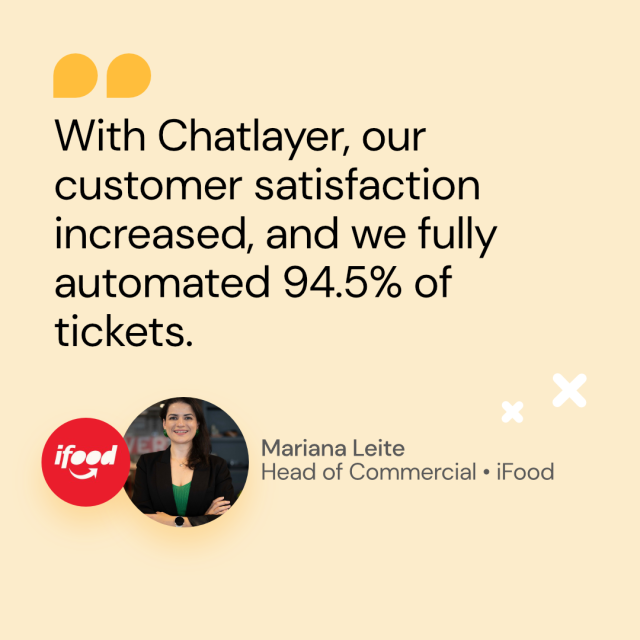
Conversational solutions are part of our uban future
Clearly, urban mobility and conversational solutions go hand in hand. Mobility companies, in many ways, are at the forefront of innovation. They're driving changes in how people get around, they inspire cities to become greener, and they set new consumer trends.
Conversational solutions like messaging apps and chatbots can set up a support system for these innovations and spread the word about them. And as probably the most flexible and mobile communication channels, conversational solutions and mobility services are the dream team of urban innovation.
